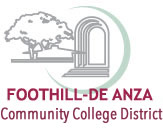Bond sales bring taxpayer savings
The Foothill-De Anza Community College District has sold its first bonds backed by Measure G, a 2020 voter-approved bond measure, while also refinancing older bonds for an estimated savings to district taxpayers of $26.6 million. Triple-A credit ratings contributed to the successful bond sales and interest rates that are favorable to taxpayers.
“This is wonderful news for the district and for local taxpayers,” said district Chancellor Judy Miner. “We appreciate voters’ support for Measure G and their confidence in the district’s fiscal stewardship. The district will continue to invest in outstanding university transfer and workforce preparation programs that will contribute to an equitable economic recovery in the region.”
Working with Morgan Stanley as the underwriter for the bonds, the district successfully sold:
- $110 million of general obligation bonds from Measure G. The bonds were sold in two
series – one series of $20 million in federally tax-exempt bonds with proceeds that
by law must be spent within three years, and $90 million in federally taxable bonds,
which can be spent over a longer period. Some proceeds from the taxable bonds are
being used to refinance – at a lower rate and shorter final maturity – 2016 certificates
of participation that were used to fund seismic retrofitting of the Flint Center parking
structure. The rest will be used for infrastructure and building projects.
- $157.76 million of general obligation refunding bonds to refinance general obligation bonds the district issued in 2012, 2014, and a portion issued in 2016, all at a lower interest rate.
District Vice Chancellor Susan Cheu explained that refunding of prior-year bonds produced total cash flow savings of $26.6 million for district taxpayers, reflecting an annual debt service reduction through 2040 of approximately $1.33 million on average. “This results in a present value savings of 14% of the amount of the refunded bonds, which significantly exceeds the 5% minimum savings threshold recommended as a best practice,” she said.
Cheu, who led the finance team that worked on the bond sale, said that the district opted for some taxable bonds to increase its flexibility. In addition to providing a longer timeline, taxable bonds may be appropriate for certain funding purposes, including affordable housing projects for students and employees. She said the difference in tax rates for tax exempt versus the taxable bonds was minimal in the current market, which gave the district maximum flexibility without a measurable financial impact.
As in prior years, the district retained its Aaa rating from Moody’s Investors Services and AAA from Standard & Poor’s. Besides a strong and growing tax local tax rate, Moody’s credited the district’s management of its budget as a basis for awarding its highest rating.
“The rating incorporates the district's healthy financial position and management's implementation of budgetary realignments to address a string of modest deficits,” the Moody’s announcement states. “…The stable outlook reflects the likelihood that the district's financial position will remain healthy given management's conservative budgeting practices and that the district will continue to benefit from an exceptionally large and diverse tax base.
The favorable ratings paved the way for the bond sale on April 7 and the bond closing on April 21.
Foothill and De Anza colleges and the district’s Central Services operation have developed preliminary priority lists of projects for possible support with Measure G bond proceeds. Both colleges also recently completed their Facilities Master Plans, which identify potential opportunities for improving the built environment, including new, renovated and repurposed facilities and site improvements. The campus facilities plans are incorporated into a districtwide Facilities Master Plan 2021-2026 that the Board of Trustees approved on May 3.
Measure G is a $898 million general obligation measure approved by district voters in March 2020 to upgrade and repair aging facilities, classrooms and labs to prepare students for careers and university transfer, and to acquire and construct needed equipment, facilities and sites.
--
Posted June 1, 2021
